RFA Argus has been confirmed today as the first military vessel to deploy low Earth orbit (LEO) satellite internet for her 400-strong crew, from global LEO communications network OneWeb and its distribution partner, Airbus.
The maritime terminal will provide low latency, high-speed broadband connectivity to the Royal Fleet Auxiliary support ship anywhere in the world – even during challenging sea conditions and high-speed motions.
The Kymeta Peregrine u8 terminal, fitted as a pilot while Argus was docked in Falmouth this summer, marks the first time that such advanced satellite-connectivity technology has been deployed on a military ship using the OneWeb network.
RFA Argus performs several key roles for the UK armed forces. She is the UK’s Primary Casualty Receiving Ship with a 100-bed hospital in times of conflict; a training vessel for military helicopters operating at sea; and she deploys as a front-line vessel around the world with helicopters to conduct counter-narcotics operations, disaster relief missions, and supporting Royal Marines amphibious raids.
Lieutenant Commander Ben Slater, from the Royal Navy’s specialist Digital unit, said: “Crew welfare and morale is a key tenet of a platform’s fighting capability. Enhanced connectivity, such as that delivered by low Earth orbit satellite networks is an area that the Royal Navy are looking to exploit. Through close collaboration with industry partners, we have been able to fit a capability onboard RFA Argus that will enable her crew to keep in touch with family and friends over the OneWeb satellite network and are looking forward to seeing how it performs at sea for the first time on a naval vessel.”
Chris Moore, VP Defence and Security at OneWeb and former 2* Royal Air Force officer says, “In the modern era of global deployments, the well-being of sailors, soldiers, aviators and civilian staff has risen to become a strategic imperative for all armed forces: it is pivotal role to generating mission effectiveness through maintaining morale. When in demanding, remote, and hazardous environments, the ability to remain connected with loved ones, access recreational resources and communicate with friends becomes vital in sustaining a resilient and motivated force. Now through OneWeb’s global constellation network and working with partners, like Airbus – we’ve shown that we can make this a reality for all.”
Ben Bridge, Airbus Defence and Space UK Chairman for Global Business and a former Royal Navy Officer, said: “Working collaboratively across the military-satellite communications ecosystem, Airbus and OneWeb have demonstrated how LEO capability can provide more resilient and richer services for those at sea. The deployment of this innovative technology reflects our commitment to providing critical connectivity solutions to the Royal Navy and Ministry of Defence in the most demanding of environments, whether that be on land, sea, air or space.”


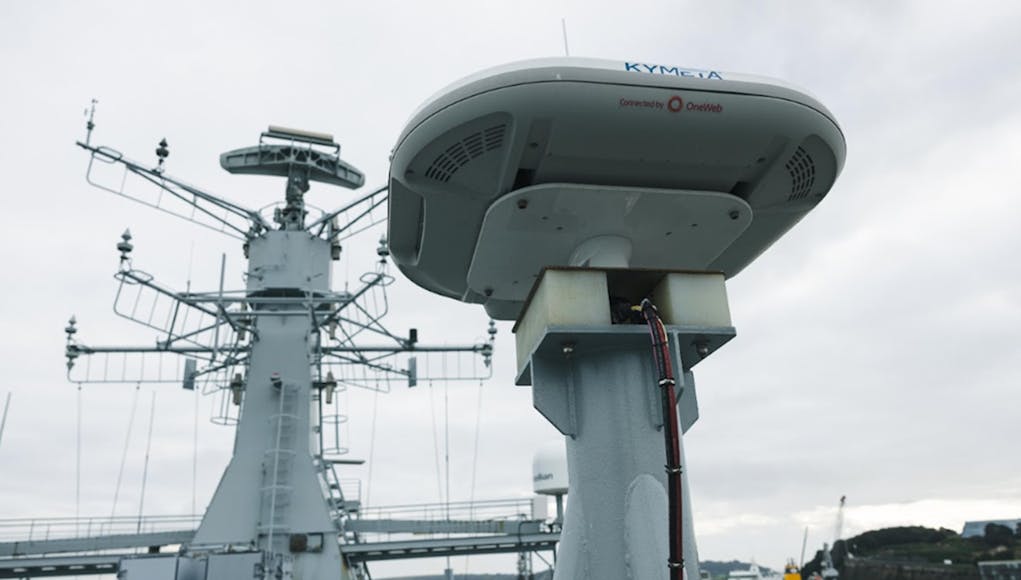
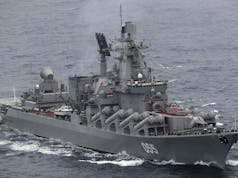
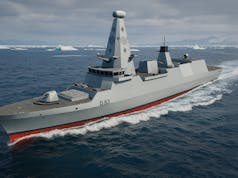

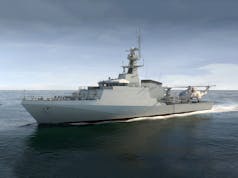

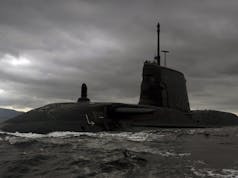
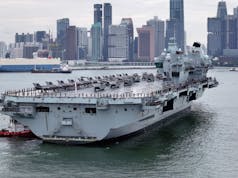
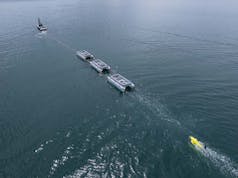
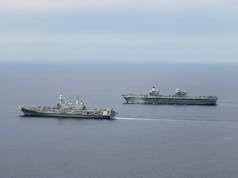
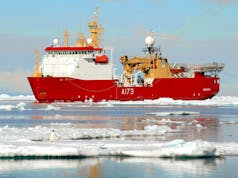

Former 2*
Cynical, moi,
His business speak must have taken years of tax payer funded training.
One web is potentially the UK’s most important strategic infrastructure. We need to make the most of it and keep Chinese and French hands off it.
Elon Musk getting to decide if Ukraine can attack Russian warships should not be a thing.
The French already own the same stake in it we do – 10% I believe.
We may have a golden share, however.
The French already have a stake in Onewb I believe – via the French Govt’s 20% stake in Eutelsat.
I’m not going to try and work out percentages, though I think after a Eutelsat-Oneweb merger both Govts will hold around 10%.
We will have a golden share, however.
Highly unlikely we will have a golden share. That is against Conservative believe of free market provides. They removed all the golden shares for all former public sector companies years ago.
The original OneWeb investment definitely included a UK golden share, it was mentioned in the official press releases at the time. After the UK government diluted its holding significantly as part of the Eutelsat transactions (regrettably in my opinion since I agree with Jim about how important OneWeb is) I did read a report from what seemed to me to be a credible source (I forget what it was) that HMG still does maintain a golden share.
Still having that golden share is something at least but I would have still preferred to see the UK increase rather than dramatically reduce its stake given the potential benefits to the military and the relatively low cost when compared to other multi-billion pound defence projects. And that “relatively low cost” comparison is even if one considers OneWeb as a military-only asset whereas in fact there are also opportunities to exploit it commercially so offset much of the cost with commercial revenue coming in.
Considering it was a boris/Cummings decision to save them from bankruptcy at significantly over market rate (NOA criticised the deal as did the courts), you would hope there is a golden share or we, as tax payers, have just thrown money at the other investors.
I think the true value of this company will be seen in a bout a decade NOA and Courts like so many in Britain don’t see the bigger picture. It’s more the Michael Dell view of closing down Apple back in the 90s rather than Warren Buffett who saw the true potential and has benefited massive since. Too often we can’t see beyond our noses.
The courts just ruled the proper process was not followed to ensure good value for the tax payer, such as exploring options and seeing which was tbe most efficient rather than going for a contract that paid a load of money to a Conservative donor. The other investors paid less, so that is the market value that we could have paid, if we did it properly. Mates rates doesn’t work the same when your spending someone else’s money.
Johnson claimed we effectively did, so it must be true 😂
A whole bunch of their satellites were stuck in Russia after the collapse of the ROSCOSMOS launch arrangements.
I thought it had been sold to the French last year sadly.
easy to track by tiktok with a public data network attached it, good grief what are they thinking?
You would hope the network is secure…I suppose in a war situation, you would switch it off as a last resort.
Depends what it’s used for, if its r&r for the crew which is turned off during war time, who cares. If its more essential services then it’s a massive issue if it can be tracked.
You can follow QE on trackers now so nothing new. Would indeed be different in a conflict.
I hope/assume that ships will retain an alternative communications system. That box looks like a mighty obvious target for an enemy in times of war.
Is it normal practice to have such an exposed cable on a quasi-warship
Did they solve the issue for the sat phone using the same frequency as the search radar? I assume this is going to add extra EM radiation/ interference that the radars will need to work around.
You can guarantee enemy nations will be looking at any known frequencies being used to exploit for their missile targeting radars.
If it works the same way as Starlink, and I’m as close to 100% sure as I can be that it does, then that is actually an AESA antenna where the uplink transmissions will be quite tightly focussed beams aimed upwards at whichever satellite in the OneWeb constellation is best positioned to act as the relay at any given time. That satellite being in low Earth orbit is also moving across the sky relatively quickly (about the same speed as the International Space Station) so the AESA beam will be tracking it as it moves and once it becomes the sub-optimal relay point relative to some other satellite that has come into the field of view the antenna will form another tight beam onto that alternative satellite and start using that instead – and so on as the satellites in the constellation orbit the Earth..
I’m no expert on battlefield comms (cue DaveyB at this point?) but I would have thought that out at sea detecting a tightly focussed beam pointing up into the sky is not trivial unless one has an air asset and even then, depending on just how tightly the beam is focussed, one would have to be quite lucky to be close enough to its path to detect it when compared to some omni-directional comms antenna squirting out EM radiation in all directions.
They thought going into the Falklands that sat tracking was impossible and then Argentina demonstrated that was incorrect. Russia then tracked allied forces in Iraq 1 using the same tech. What I don’t know if if that vulnerability has been fixed.
They certainly won’t have been using AESA arrays to form tightly focussed beams during the Falklands war and I suspect not in Iraq 1 either. That technology has only recently become as portable as it is now. I assume at the time they were using dishes but I’m not sure how the spillage from a parabolic antenna will compare with a tight beam formed using AESA constructive/destructive interference.
I hope someone like DaveyB can wade in here. I am a physicist but I don’t pretend to be an expert on the practicalities of what is implemented in the field.
Certainly for some months Musk reported failed attempts to jam Starlink but there has been some success since though equally it seems that simple shielding or manipulation of the receiver antenna even putting it in a small depression can alleviate the jamming. But haven’t heard anything further for months.
The only thing I know is they use fewer larger satellites further out than Starlink.
What surprised me is that Arhus has 400 crew. Thought it would be much smaller.
It’s because it’s the littoral strike platform now so full of marines I suppose.
Hmmmm, not sure. They don’t count as crew surely. And I’ve not seen it confirmed as to what LRG(S)s RM dets comprise.
In fact, beyond Vanguard Strike Company which was announced years ago I’d have to make an educated guess what, on the RM side, these LRG comprise.
OK, this is the perfect opportunity for me to ask a really dumb question that has been bugging me for ages. It’s not meant to be facetious or insulting, exactly the opposite as I have the utmost respect for our armed forces and by all accounts RN marines are particularly impressive, but …
As I understand it many RN vessels carry at least a small party of marines for boarding operations etc and for the bigger ships (frigates etc) those deployments, at least for the ships crews (maybe marines get rotated on and off more often?), can be multi-month deployments.
So my question is, what does this bunch of smart, motivated embarked marines do all day when couped up (for months?) on a tin can and presumably not actively needed for a boarding operation or whatever on a daily basis? Do they fill entire working days 7 days a week with drills, exercise and other stuff or is there a lot of sitting around with no scheduled activities. Or do they take on certain crew activities (ship maintenance etc) to fill the time? Or maybe I’m underestimating quite how many times they are called on to do real live boarding operations and other ship defence activities that I assume is their primary role.
Again for emphasis – this question is meant respectfully. It’s just something that I couldn’t get my head around and work out for myself.
I’d be guessing as much as you, actually. Beyond finding some industrial sized baked bean tins to use as makeshift weights, drill, exercise on deck, maintain their kit and RIBS, and all the rest. I assume they would also man the ships .5s and GPMGs in certain littoral areas too.
These RM you refer to used to come from, if memory serves, the Fleet Standby Rifle Troop. Now expanded, as parts of Four Two Commando carry out the role.
It must be the marines, aircrew etc. Argus definitely doesn’t have 400 RFA crew to operate.
There was a video a while ago with a tour of Argus or bits of it anyway. The crew showed his room, honestly could of been a land base.
Perhaps the medical team when it’s being used as a hospital ship are included…
Yes, but it’s not a Hospital Ship mate. There’s a big difference between a PCR and hospital.
There’s still up to 200 medical staff when its a PCR ship.
Must be that then.
This is exactly what can help keep people in the forces and encourage people to join. The military has to shake off some of its stubborn old rules.
Cool… so anyone looking, can find them easier. 🙂
Think AIS does that better, seeing as that’s it’s role.